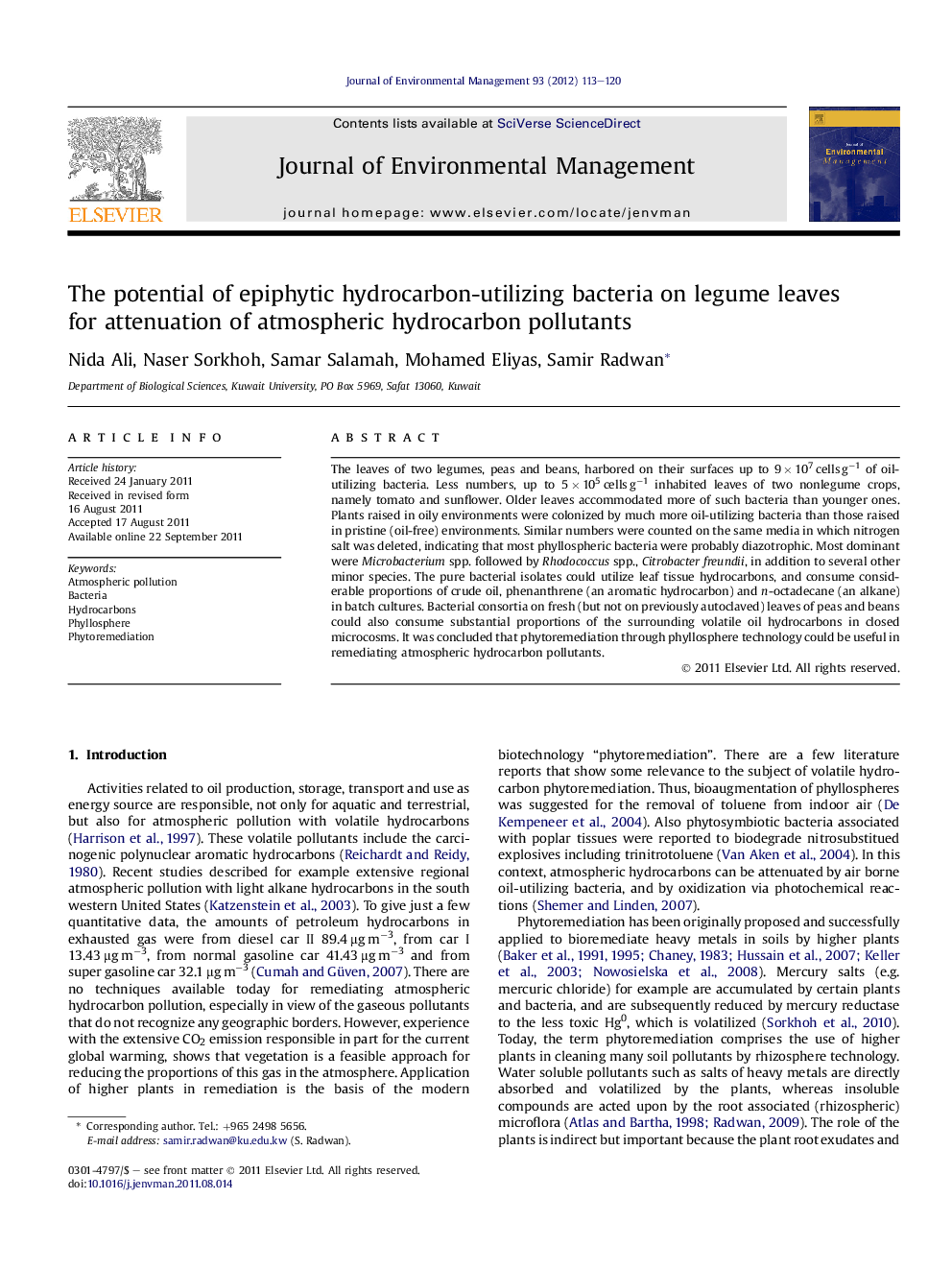| Article ID | Journal | Published Year | Pages | File Type |
|---|---|---|---|---|
| 1056972 | Journal of Environmental Management | 2012 | 8 Pages |
The leaves of two legumes, peas and beans, harbored on their surfaces up to 9 × 107 cells g−1 of oil-utilizing bacteria. Less numbers, up to 5 × 105 cells g−1 inhabited leaves of two nonlegume crops, namely tomato and sunflower. Older leaves accommodated more of such bacteria than younger ones. Plants raised in oily environments were colonized by much more oil-utilizing bacteria than those raised in pristine (oil-free) environments. Similar numbers were counted on the same media in which nitrogen salt was deleted, indicating that most phyllospheric bacteria were probably diazotrophic. Most dominant were Microbacterium spp. followed by Rhodococcus spp., Citrobacter freundii, in addition to several other minor species. The pure bacterial isolates could utilize leaf tissue hydrocarbons, and consume considerable proportions of crude oil, phenanthrene (an aromatic hydrocarbon) and n-octadecane (an alkane) in batch cultures. Bacterial consortia on fresh (but not on previously autoclaved) leaves of peas and beans could also consume substantial proportions of the surrounding volatile oil hydrocarbons in closed microcosms. It was concluded that phytoremediation through phyllosphere technology could be useful in remediating atmospheric hydrocarbon pollutants.
► This paper reports on bacteria associated with plant leaves with the potential for consuming atmospheric hydrocarbon pollutants. ► Further, these microorganisms have the potential for nitrogen-fixation. ► This makes them valuable biological materials in the phytoremediation of volatile hydrocarbon pollutants.
